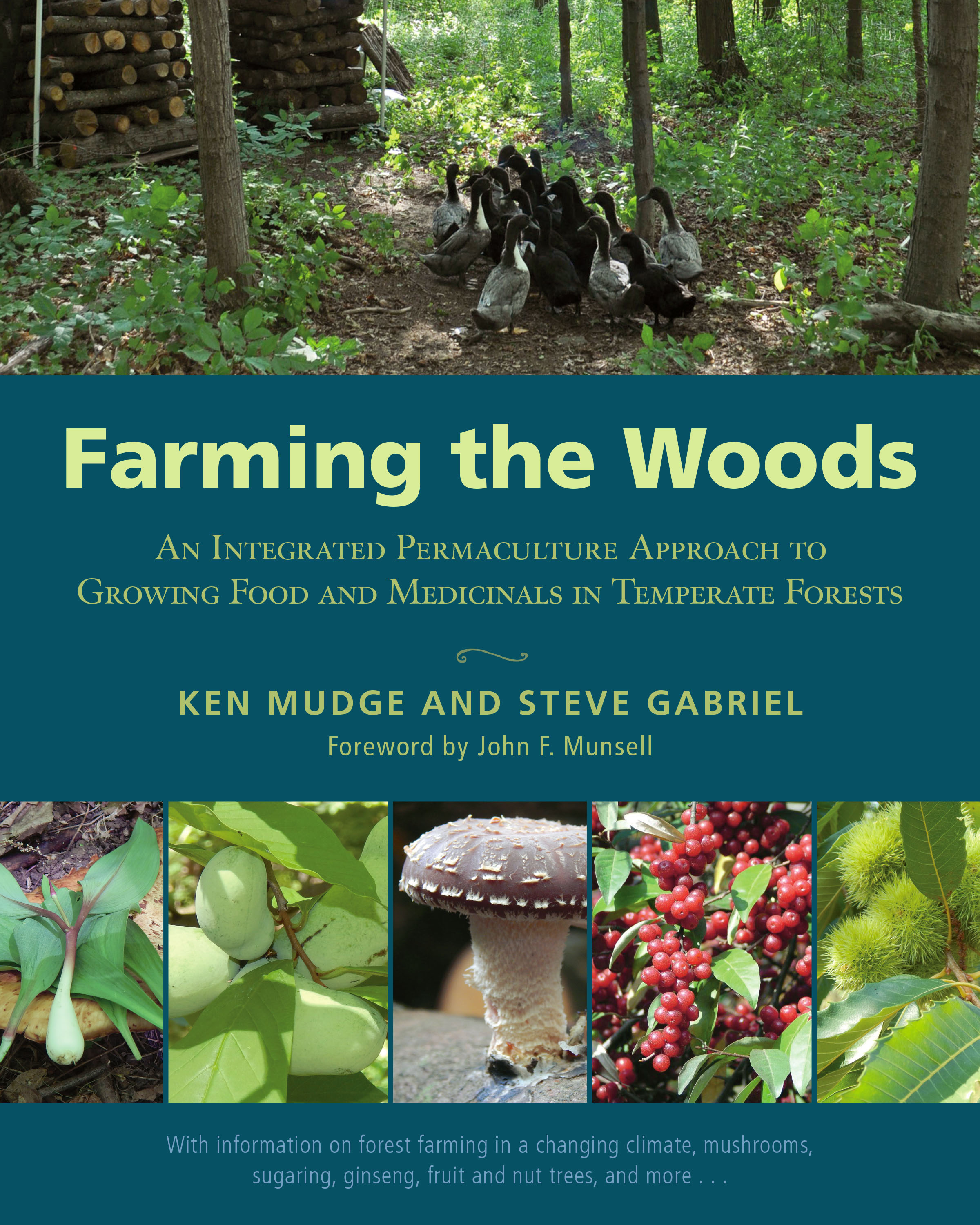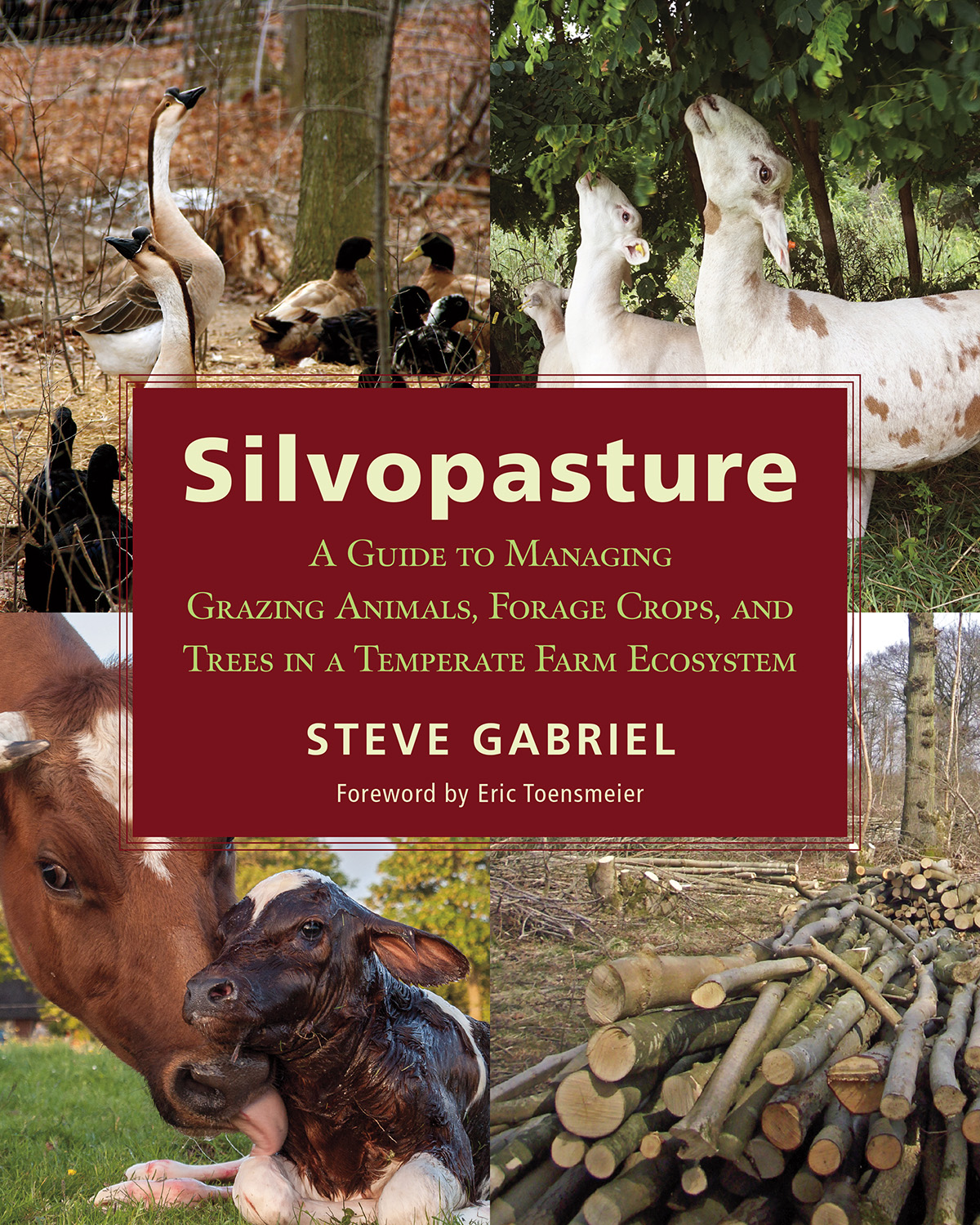Farming the Woods
An Integrated Permaculture Approach to Growing Food and Medicinals in Temperate Forests
The first in-depth guide for farmers and gardeners who have access to an established woodland and are looking for productive, innovative ways to create a natural forest ecosystems that produces a wide range of food, medicinals, and other non-timber products.
“What a joy to read! Nice pictures, great case studies, and well organized. . . . Farming the Woods is the source for temperate climate agroforestry.”—Jonathan Bates, Owner of Food Forest Farm
While this concept of “forest farming” may seem like an obscure practice, history indicates that much of humanity lived and sustained itself from tree-based systems in the past; only recently have people traded the forest for the field. The good news is that this is not an either-or scenario; forest farms can be most productive in places where the plow is not: on steep slopes, and in shallow soils. It is an invaluable practice to integrate into any farm or homestead, especially as the need for unique value-added products and supplemental income becomes more and more important for farmers.
Farming the Woods covers in detail:
- How to cultivate, harvest, and market high-value non-timber forest crops
- Comprehensive information on historical perspectives of forest farming
- How to mimic the forest in a changing climate
- Cultivation of medicinal crops
- How to create a forest nursery
- Harvesting and utilizing wood products
- The role of animals in the forest farm
- How to design and manage your forest farm once it’s set up
Forest crops covered include:
- American ginseng
- Shiitake mushrooms
- Ramps (wild leeks)
- Maple syrup
- Fruit and nut trees
- Ornamental ferns
- And many more!
This book is a must-read for farmers and gardeners interested in incorporating aspects of agroforestry, permaculture, forest gardening, and sustainable woodlot management into the concept of a whole-farm organism.
Reviews and Praise
Choice-
"This excellent book by Mudge (Cornell Univ.) and Gabriel (educator, forest farmer, and ecologist, Finger Lakes region, New York) highlights the diverse income streams that forest landowners or individuals who want to design a forested environment on their land can cultivate. The book begins with clear definitions of forest farming, agroforestry practices, and a historical perspective on cultivating crops in the forest. A foundational understanding of forest ecology is presented, including forest food webs, succession and disturbance, nature mimicry, and adaptation as the climate changes. Later chapters focus on cultivating trees for fruits, nuts, or syrups; using nontimber forest products; growing mushrooms for food and medicine; gathering high-value medicinal plants; producing forest products in nurseries; harvesting wood products; and incorporating animals in the system as possible forest farm endeavors. The discussions of crops suggested in this detailed text are supported with diverse charts and interesting case studies to help readers find the path that best suits their interests. The conclusion provides guidelines for success in the design of forest farms. Summing Up: Highly recommended. All levels/libraries.”
More Reviews and Praise
Permaculture-
Forests, Ken Mudge and Steven Gabriel write, have long been humanity’s pantry, where our species and many others have found the food, medicines and materials needed for survival. It is only within the last few hundred years, that we have become, as the saying goes, unable to see the forest for the trees. Land populated primarily with trees often only means lumber or an uncleared building site. Farming the Woods seeks to remind readers of those days, encouraging and enticing future forest farmers with thoughts of savory mushrooms, sweet saps, hearty nuts, and the rich meat of animals raised under the leaves, presenting all a farmer needs to begin making that dream a reality. Farming the Woods is sure to become a trusted companion for all farmer types. Whether one plans to solely work the forest or to use forested ground as a working farm, Ken Mudge and Steve Gabriel have crafted a tome destined to become a classic. The calm, friendly and knowledgeable voices of experience present a well-written book that will be useful for generations.”
Booklist-
"It seems that the only thing farming and forestry have in common is that they both take place outdoors. Yet, according the authors of this unorthodox but exceptionally useful handbook, 'forest farming,' which involves gathering a wide variety of plants, from mushrooms to medicinals, predates agriculture. Aiming their advice at readers living in temperate climate zones, including the upper half of North America, Mudge and Gabriel draw on their expertise in the rapidly emerging field of agroforestry to provide in-depth tips on cultivating mushrooms, gathering fruits and nuts, harvesting popular herbs such as ginseng, and even managing goats for maintaining canopy sheltered grasses and ornamentals. Along with sumptuous illustrations and invaluable case studies, their work provides a wealth of information for anyone with wooded land looking for ways to better manage it as well as reap a little extra profit from its rich agricultural potential.”
“What a joy to read! Nice pictures, great case studies, and well organized. I can tell the authors put their heart and soul into this book. Farming the Woods is the source for temperate climate agroforestry, particularly for Northeast permaculture designers and teachers.”--Jonathan Bates, Owner of Food Forest Farm & contributing author of Paradise Lot
“My particular focus of research is in mushrooms, and Farming the Woods not only offers detailed methodology and techniques for woodland mushroom cultivation, but also adds insight on scheduling and calendars to help orchestrate yields in seasonal climates. I have always wanted to find this information on forest farming bundled together into a collaborative matrix with nut, berry, and rhizome production, and this book helps bridge sustainable agriculture and a healthy, circular systems approach. The authors urge us to take advantage of forested acreage we may have thought was unusable. Fill your forests with food!”--Tradd Cotter, author of Organic Mushroom Farming and Mycoremediation
“At last, a comprehensive forest farming guide for cool temperate climates! The authors have done a superb job explaining forest ecology and describing how to integrate fruits, nuts, mushrooms, medicinals, animals, and more into forest systems. A must-read for anyone interested in agroforestry, forest gardening, or utilizing forests for specialty crops.”--Martin Crawford, author of Creating a Forest Garden
Publishers Weekly-
"In this latest of the publisher’s serious, readable, and eminently useful books on cutting-edge permaculture practices, Cornell University professor Mudge and Fingerlakes forest farmer and horticulturalist Gabriel take a step outside the permaculture trend toward forest gardening—gardening that emulates forest patterns—and focus on farming in the woods by maintaining a healthy forest 'while growing a wide range of food, medicinal, and other non-timber products.' Beginning with a nuanced cultural history of forest farming, Mudge and Gabriel share their expertise on an abundance of woodland products: pollination techniques for paw-paws; the comparative economics of shiitakes and ginseng; maple, birch, and walnut sugaring methods; hazelnut breeding; and the safe use of a chain saw, to name but a few. A thoughtfully speculative but practical section on the possible effects of climate change reflects the authors’ humble and hopeful perspective that 'much of the trouble in the world today is due to disconnection from ... larger cycles. Forest farming invites us to change these cycles and to offer a gift for generations to come.’”
About The Author
| Pages: | 384 pages |
| Book Art: | Color photos and illustrations throughout |
| Size: | 8 x 10 inch |
| Publisher: | Chelsea Green Publishing |
| US Pub. Date: | September 23, 2014 |
| UK Pub. Date: | October 20, 2014 |
| Paperback: | 9781603585071 |
Available In/Retail Price
Paperback, 384 pages, $39.95USD, £30.00GBPMEDIA & EVENT INQUIRIES
Media Inquiries:
Contact Publicity at: [email protected] or (802) 295-6300 x 127
Event Inquiries:
To set up an author appearance or event contact Darrell Koerner at [email protected]
Review Copies:
Click here to request a review copy of one of our books.
Rights & Permissions
Email us for rights & permissions inquiries.
SALES CONTACTS
Special, Corporate and Academic Sales
Darrell Koerner
[email protected]
(303) 963-5612
Trade and Library Sales
Kirsten Drew
Book Strategy Manager
[email protected]
Independent Bookstore Sales
To place a retail wholesale order, please contact the appropriate regional representative.
Canadian and Overseas Trade Distribution
To place an international wholesale order, please contact the appropriate foreign trade distributor.
Academic Kit
Request a desk or evaluation copy.




